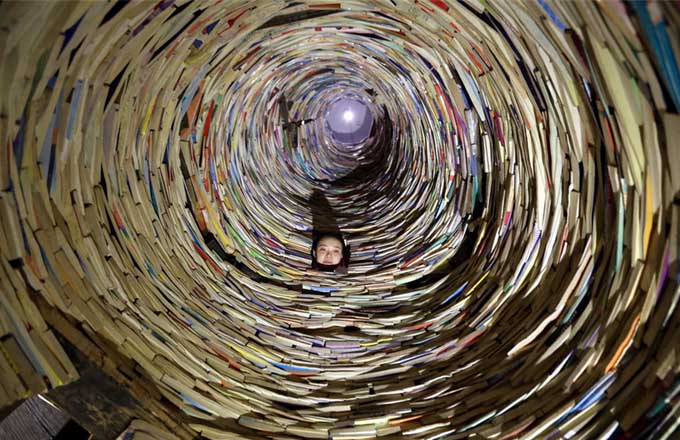Asteroid scare prompts calls for space research
![Lagrangian points are locations in space where gravitation forces ans oribital motion of a body balance each other. There are five Lagrangian points in the Sun-system, the L2 points is exposed to less sun radiation than other Lagrangian points. [TIAN CHI/CHINA DAILY] Asteroid scare prompts calls for space research](../../images/attachement/jpg/site1/20130222/00221917dead1290f83411.jpg) |
|
Lagrangian points are locations in space where gravitation forces ans oribital motion of a body balance each other. There are five Lagrangian points in the Sun-system, the L2 points is exposed to less sun radiation than other Lagrangian points. [TIAN CHI/CHINA DAILY] |
With images of fireballs slashing through the skies over Russia still fresh in people's minds, China's top asteroid scientist called for greater research into the dangers asteroids pose.
Major space powers have become more aware in recent years of the threat posed by objects hurtling toward Earth, but more needs to be done, said Zhao Haibin, an asteroid researcher at Purple Mountain Observatory under the Chinese Academy of Sciences.
On Feb 15, a rock 17 meters in diameter smashed into a frozen lake on the outskirts of the Russian city of Chelyabinsk in the Urals. Its shockwaves injured 1,200 people and damaged thousands of homes.
The energy unleashed was around 30 times that of the nuclear bomb dropped on Hiroshima in 1945, according to NASA estimates.
The next day a 130,000-metric-ton asteroid, with a diameter of 40 to 50 meters, passed closer to Earth than many communication and weather satellites.
Earlier last week, an asteroid slammed into Cuba, but did not cause any casualties or damage to property.
Russia is considering establishing a body to monitor asteroids.
A meteor shower rained on Jilin province in 1976, the only recorded instance of space rocks hitting the country.
But the actual number of meteor hits would be much higher, Zhao said.
There is ample evidence of meteor hits over the centuries across China.
But there is another reason asteroids are a hot topic.
As the planet's resources become increasingly scarce, countries and organizations are looking to asteroids for mineral supplies.
Chinese scientists first turned their attention to asteroids in 1949 and were world leaders at the time.
But "observing near-Earth objects is not a major priority now, so the input is relatively small", Zhao said.
China's lunar probe Chang'e-2 flew 10 million km and conducted the country's first exploration of the near-Earth asteroid Toutatis on Dec 13, making China the fourth country to explore asteroids in space.
But such missions cannot be carried out regularly since there is no national plan and close-up explorations are costly, he said.
So current research on asteroids in China relies mostly on ground-based observation, which costs less and allows scientists to study a large number of asteroid samples, he said.
More than 400 observation stations across the globe are doing research and contributing to asteroid research goals set by NASA.
NASA set a 10-year goal in 1998 to identify and catalogue the orbital characteristics of 90 percent of near-Earth objects larger than 1 km. It set another 20-year goal in 2005 to detect 90 percent of near-Earth objects with a size greater than 140 meters in diameter starting in 2008. The data from the research were shared internationally.
China's few asteroid researchers are contributing to the efforts.
A Schmidt telescope with a 1-meter aperture was put into use in 2006 at Purple Mountain Observatory, which has found more than 1,200 asteroids so far.
Zhao is preparing for a project that aims to use an optical telescope and observe the rotation periods of several thousands asteroids within a few years, which he hoped would be useful for possible future close-up asteroid exploration missions.
"Knowledge gained from ground observation will be important information for deep-space exploration projects, because it could be very dangerous for explorers to get close to asteroids if the designers lack knowledge about things such as how an asteroid circles in an orbit and how it rotates," he said.
But if China needs to learn more about asteroids, the country's "not-so-advanced" ground observation capability will need to be improved, he said.
The observatory's Near-Earth Objects Survey Telescope is the largest of its kind in China and the most advanced in Asia, but it is only a small to medium telescope globally, he said.
Relatively large Schmidt telescopes, those having a 1-meter aperture or larger, have been in use since the 1940s. Between 1945 and 1980, eight telescopes of this kind were built worldwide. The Karl Schwarzschild Observatory in Germany has a 2-meter Schmidt telescope, the world's largest.
chengyingqi@chinadaily.com.cn
- 'Meteorite rush' begins in Russia
- Meteor fragments found in Russia's Chelyabinsk
- Russia cleans up after meteor blast injures more than 1,200
- Russia cleans up after meteor blast
- Meteorite-hit Russia proposes common space defense system
- Meteorite damage exceeds $30m in Russia
- Meteorite crashes in Russia
- Meteorite hits Russia, 1,200 hurt



















